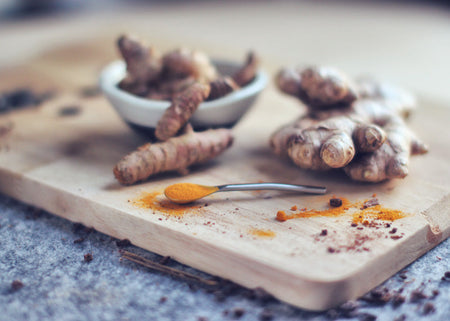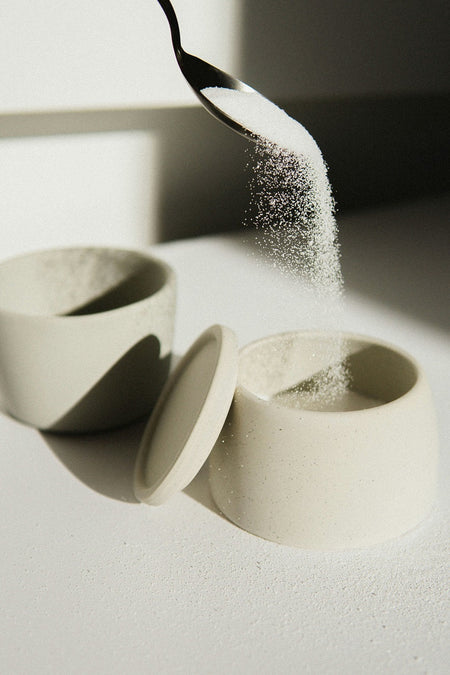Die Low Carb Diät ist eine Ernährungsweise, die in den letzten Jahren immer mehr an Beliebtheit gewonnen hat. Bei dieser Diätform wird der Kohlenhydratanteil in der Nahrung drastisch reduziert und durch eine höhere Aufnahme von Proteinen und gesunden Fetten ersetzt. In diesem Artikel werden wir uns genauer mit der Low Carb Diät auseinandersetzen und ihre Auswirkungen auf den Körper beleuchten.
What is a low carb diet?
Low carb stands for "low carbohydrates" and the idea behind this diet is to reduce the keep blood sugar levels stable and to encourage the body to use more fat as an energy source. On the one hand, this allows you to lose weight and on the other hand positive effects on health health. There are different variants of the low carb diet, which differ in the permitted amount of carbohydrates and other details. The low carb diet is therefore not just a method for losing weightbut is also often used for treatment of certain diseases such as diabetes.
The principle behind this diet is called ketosisIf the body has fewer carbohydrates available than it needs for energy, the metabolism changes and after a few days enters ketosis. state of ketosis. In this state, the fat loss is stimulated.
Advantages of a low carb diet
- Long-lasting feeling of satietyProteins and high-quality fats keep you full for a long time, which means that you eat less with a low carb diet. feeling of hunger
- Helps you lose weightWith the low carb diet, the body draws energy from fat cells, which burns fat. This diet also saves calories, which is an advantage when losing weight. In addition, protein promotes muscle building, which in turn burns more carbohydrates at rest.
- No cravings: Since only little sugar or only foods with a lower glycemic index are eaten, the insulin level remains relatively constant. This counteracts cravings and performance is also more constant.
- Promotes healthA low-carbohydrate diet ensures that fat molecules are minimized. Blood pressure stabilizes and the risk of heart attack decreases.
- Less water retention in the body: The glycogen stores are virtually empty with this type of diet, which means that no water can be bound and stored in the body.
- No loss of muscle mass: Due to the increased protein intake in the low carb diet, muscle breakdown is counteracted.
Types of low carb diets
There are different types of low carb diets. One of the best known is the classic Atkins diet, in which carbohydrates are almost completely eliminated. Another variant is the ketogenic diet, in which very few carbohydrates and more fat are consumed in order to put the body into a state of ketosis. The Paleo diet is also a form of low carb diet, which also has its own focus has its own focus. There is therefore no single low carb diet, but rather different approaches and variants. Here is an excerpt of the best-known low carb diets:
LOGI diet
The LOGI diet is a moderate low carb dietin which up to 130 grams of carbohydrates per day are permitted. LOGI stands for "Low Glycemic and Insulinemic Diet" and aims to reduce the keep blood sugar and insulin levels low. When eating carbohydrate-rich foods, it is particularly important to ensure that they only cause blood sugar levels to rise slowly. Wholemeal products and pulses can therefore be eaten in moderation.
Paleo diet
With the Paleo diet only Foods that were already present in the Paleolithic Age (Paleolithic) are eaten. This mainly includes meat, fish, fruit, nuts and vegetables. Cereals, pulses, milk and dairy products are avoided. The daily carbohydrate intake is around 50 to 100 grams.
Keto diet
Also the Keto diet is one of the strictest low carb diets and allows a maximum of 30 grams of carbohydrates per day. Carbohydrate-rich foods are taboo on this diet. Instead foods rich in fat and protein such as meat, fish, dairy products, nuts and seeds are preferred. Low-carbohydrate vegetables and fruit should be consumed in small quantities.
Low carb foods: what you should eat
With a low carb diet you can eat the following foods:
- Vegetables such as broccoli, spinach, zucchini, peppers, cucumbers, tomatoes, cabbage, asparagus
- Fruit with low fructose such as berries (strawberries, raspberries, blueberries), avocado
- Proteins such as meat, fish, eggs, tofu, pulses
- Healthy fats such as avocado oil, olive oil, coconut oil, nuts, seeds
- Dairy products such as cheese, yoghurt, quark, cream (in moderation)
It is important to hidden carbohydrates in processed foods and to avoid sugar and starchy foods in particular.
You should avoid these carbohydrate-rich foods on the low carb diet
On a low carb diet you should avoid the following foods or severely restrict their consumption:
- Sugary foods such as soft drinks, sweets, cakes, pastries and ice cream
- Highly processed foods such as fast food, ready meals and snacks
- Cereal products such as bread, pasta and rice
- Starchy vegetables such as potatoes and corn
- Fruits with a high sugar content such as bananas, grapes and mangoes
- Alcohol
Sustainable weight loss through a low carb diet: diet without carbohydrates
With the low carb diet, the body is not supplied with enough carbohydrates, which causes it to lose its energy supply from the fat reserves and you therefore lose weight quickly quickly. In addition to fat, the body also loses a lot of water. In addition, by avoiding simple carbohydrates can prevent cravings. However, it takes a few days for the body to get into the state of so-called ketosis state.
In order to maintain your weight permanently after a successful weight loss, you should not return to your old eating habitsotherwise you risk the yo-yo effect. Instead, it is advisable to gradually increase your carbohydrate intake a balanced diet and integrate sport into everyday life. You should also keep an eye on your nutrient supply, especially when following a strict low carb diet.
What should you look out for on the carbohydrate diet?
If you want to try a low carb diet, there are a few important things to consider to ensure that you get all the nutrients your body needs:
- Eat enough food: It is important to eat enough to avoid malnutrition. Especially with strict versions of the diet, you should keep a careful eye on your nutrient supply to avoid deficiencies.
- Choose healthy fatsChoose healthy fats such as avocado, nuts, seeds and cold-pressed oils. Avoid processed foods that are loaded with trans fats.
- Eat enough proteinProtein is important for building muscle and can help you feel fuller for longer. Choose proteins from lean meats, fish, eggs, dairy products and plant sources such as legumes and tofu.
- Choose low-carb vegetablesVegetables are an important source of fiber, vitamins and minerals. Choose vegetables such as spinach, broccoli, kale, asparagus, zucchini, eggplant and bell peppers.
- Avoid processed foodsProcessed foods often contain hidden sugars and carbohydrates that can harm your body. Choose whole foods instead.
- Monitor your carbohydrate intakeMonitor your carbohydrate intake to make sure you're sticking to your daily carbohydrate limit, especially avoiding refined sugars.
- Drink enough waterDrink at least 2-3 liters of water per day to keep your body hydrated and boost your metabolism.
Low carb diet plan: Recipe ideas for your everyday life
We have some super tasty recipes for you low carb recipe ideas for your everyday life so that you can easily put together your own nutrition plan. More recipes you can also find on our blog and on our Instagram channel.
breakfast:
- Omelette with vegetables and cheese
- Greek yogurt with berries and nuts
- Scrambled eggs with bacon and avocado
- Low carb pancakes made with almond flour
- Breakfast salad with eggs, spinach and tomatoes
- Smoothie with spinach, avocado and berries
Lunch:
- Salad with chicken, avocado and peppers
- Vegetable soup with chicken
- Zucchini pasta with pesto and tomatoes
- Tuna salad with cucumber and egg
- Vegetable omelette with mushrooms and onions
- Chicken curry with cauliflower rice
Snack for in between meals:
- Nuts
- Cheese
- Vegetable sticks with quark or hummus dip
- Protein bars
- Protein shakes
Dinner:
- Salmon fillet with asparagus and broccoli
- Zucchini lasagne with minced meat and mozzarella
- Chicken breast with vegetable pan
- Fried tofu with broccoli and carrots
- Fillet of beef with spinach leaves and peppers
- Turkey steak with cauliflower and mashed potatoes
Don't want to go to the trouble of putting together a meal plan and recipes and having to buy the ingredients individually? This is totally understandable in an often stressful working day. For this reason LiveFresh the food cleanse developed – Low carb, high protein and 100% vegan. The weight loss diet contains everything you need - from breakfast to dinner and a few snacks, you're all set. completely supplied every day. The ready-made nutrition plan guides you through the entire diet.
If you only want to replace individual meals with quick and above all healthy alternatives, then the vegan ready meals from LiveFresh are just the thing for you: All naturally low carb!
Who is the low carb diet suitable for?
The low carb diet is generally suitable for people who lose weight or have certain health problems that are aggravated by eating carbohydrates, such as diabetes or obesity. Also people who have problems with food cravings or blood sugar fluctuations can also benefit from the low carb diet. However, it is important to note that thisdiet is not suitable for everyone. is not suitable for everyone. People with certain pre-existing conditions or metabolic disorders should avoid the low carb diet or follow it under medical supervision. Especially if you have a pre-existing liver, kidney or heart condition, but also if you are pregnant, it is advisable to consult a doctor before starting such a dietary change. consult a doctor or nutritionist before starting such a diet.
What is the best way to start low carb?
If you want to start the low carb diet, it's best to start with the following, proceed slowly and graduallyrather than cutting out carbohydrates completely straight away. Start by reducing your carbohydrate intake by, for example replacing sugary drinks and snacks with healthier alternativesthat contain more protein and healthy fats. Then gradually eliminate foods high in carbohydrates, such as pasta and bread, from your diet and add more protein and healthy fats to your diet. more vegetables and protein-rich foods to your diet. It can also be helpful to create a list of low-carb foods and recipes to help you plan your meals.
Can you lose weight on a low carb diet?
Yes, the low carb diet can help you lose weight. By reducing the intake of carbohydrates, the body is forced to lose weight, stored fat reserves as an energy sourceinstead of relying on carbohydrates. This can lead to a faster weight loss especially in the first few weeks of the diet. The low carb diet can also help to reduce the stabilize blood sugar levels and reduce cravingswhich can reduce overall calorie intake. One balanced diet with sufficient calories and regular exercise are just as important for achieving and maintaining a healthy body weight.
Which fruit is suitable for a low-carb diet?
Fruit is an important source of nutrients and fiberbut some types of fruit also contain high amounts of carbohydrates. If you are following a low carb diet, you should pay attention to this, Fruit with a low carbohydrate content content. Here are some types of fruit that are well suited to a low carb diet:
- Berries such as strawberries, raspberries, blueberries and blackberries
- Grapefruit
- peaches
- Nectarines
- Apples (in moderation)
- Pears (in moderation)
- Oranges (in moderation)
- Watermelon (in moderation)








